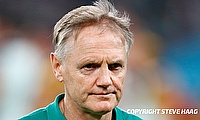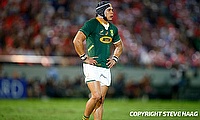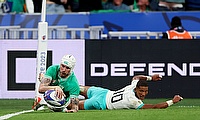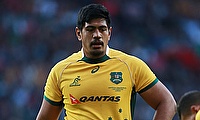Australia's Hybrid Experiment
Throughout many industries, products we have come to know and love are becoming hybrid. The idea is simple, by marrying two products together we are creating a new superior more sophisticated product. This can be seen in the form of the Toyota Prius or in many high street trendy cafés. No longer is a hamburger sufficient now it’s all about the “lasagna burger” or the “soup dumplings”
Now, this can even be compared to Australian rugby. For so long Australia produced such good back line players who had one position and were the best in the world at that position. But now the temptation by so many coaches is to play certain players out of position to help the short-term goals of the club/national team. In return many players are left with a lack of identity and don’t really understand what their core role is in the team any longer.
If you cast your mind back to 2001; Matt Burke was arguably the finest full back in the World but Eddie Jones had other ideas and had visions of Matt Burke playing at 13 allowing Queensland Reds Chris Latham to play at full back.
An honest appraisal of the Matt Burke case study would lead us all to the conclusion you don’t move strength to cover a weakness. Just because someone is great at one position it automatically doesn’t make him great at another.
In more recent times James O’Connor blasted onto the scene in 2008 as this energetic inside center, seen by many as the air to Matt Giteau. But with many different coaches having different objectives James ended up playing all over the backline and fell into this vortex of not really knowing what his job entailed. Was he a play maker? Was he a finisher? Was his job game management? I doubt the coaches knew what his role was but they just wanted to get his name on the team sheet regardless what number he had on his back.
In many ways this has been extremely detrimental to his development and lead him to be a so-called 'Jack of all Trades' but not really world class rugby player in which he could well be. Yes he kicks goals, he can run good lines but he hasn’t developed into a complete rugby player. Is he really much better now at 24 then he was at 19?
The fever of the 'Hybrid Rugby' player is catching on. Take Brian O'Driscoll's retirement as an example. Promising Irish Fullback Robbie Henshaw has been thrown into the limelight and expected to pick up where Brian left off. No easy feet for any player especially someone who is unfamiliar with the intricacies of the position.
Alarm bells need to be ringing for Australian rugby because this is not an isolated example. Everyone including myself thought Australia had a great young team at the 2011 World Cup that would be coming to its peak right about now. But if you look at the team that played vs. the All Blacks in the World Cup semi-final, only Steven Moore and Adam Ashley Cooper will play this weekend vs. France.
Under Robbie Deans this became a regular occurrence for the Wallabies. With no one player in the backline being consistently picked in the same position: Kurtely Beale, Berrick Barnes Adam Ashley-Cooper, Matt Giteau, Rob Horne, Pat McCabe, and Anthony Faingaa all suffered major set backs from the constant chopping and changing. The hybrid experiment might work with the science of creating an affordable small car but unfortunately for the wallabies the theory doesn’t work in the art of creating a world class Rugby union side.








